At around $2,199, it features a complex optical design with no fewer than 14 elements in 9 groups, and a minimum focus distance of 3.28 ft (1.0 m). The new lens includes two large-diameter extra-low dispersion glass elements, and a single aspherical surface. Externally, the lens has the same cosmetic appearance as other AF-S models in the lineup, and includes a sonic-type AF motor and wide-focus collar with full-time manual override. With a large 82mm-diameter accessory thread and measuring 4.17 x 3.72” (106 x 94.5 mm), the lens is considerably larger than the maker’s 85mm F1.4 model. It is also quite a heavy lens, weighing in at 2.17 lb (985 grams).
We’ve analyzed the lens on the second-generation, 36-Mpix full-frame Nikon D810, and are delighted to share the results.
Measurements: Outstanding sharpness and uniformity
As one might hope for in a lens from one of the most respected manufacturers in the industry (and from a lens costing over $2,000), the 105mm performs exceptionally well. Used with the AF-S Nikkor 200mm F2, it is the best-performing Nikkor lens in the lineup. On the 36-Mpix Nikon D810 full-frame body, it has very high sharpness levels (equivalent to 33 Mpix of detail), low distortion, and superior chromatic aberration correction. Although it has high sharpness wide-open and excellent peripheral sharpness, peak performance is achieved at f/5.6-8. On the flip side, it has quite significant vignetting (although just –2EV at its maximum), with traces visible in the lab at all apertures. It has good-to-excellent transmission of T1.7.
Comparison 1: Nikon AF-S NIKKOR 105mm f/1.4E ED vs. Nikon AF-S VR Micro-Nikkor 105mm f/2.8G IF-ED vs. Nikon AF DC-Nikkor 105mm f/2D
Against its predecessor the AF DC-Nikkor 105mm F2D and the still-current AF-S VR Micro Nikkor 105mm F2.8G IF ED (a lens used for portrait photography as much as for macro photography) the new 105mm F1.4 lens has significantly higher sharpness levels than either model. It has certainly been designed with high-resolution sensors in mind, though (as always) the figures don’t tell the whole story.
What’s surprising is the slightly lower-than-expected sharpness levels of the 105mm macro. It’s not that the macro is a poor performer; it has excellent sharpness wide-open and it has very good uniform sharpness across the field. It’s just that the macro is overshadowed by the new 105mm F1.4.
Nikon AF-S NIKKOR 105 mm f/1.4E ED vs. Nikon AF-S Nikkor 85 mm f/1.4G vs. Nikon AF-S Nikkor 58 mm f/1.4G
At around the same price as the new Nikkor is the highly-regarded 85mm F1.4G. Anyone looking at adding the 105 mm F1.4 to their kit bag should also be tempted by the 85 mm as an option. And there is a lot to like.
Besides the slightly wider angle of view and closer 0.85 m minimum focus distance, the 85mm is around a third smaller in volume and weight. It doesn’t quite match the 105mm in outright sharpness in the lab, nor is it as sharp wide-open, though that’s mainly due to lower peripheral sharpness. But it’s very close. The main weakness of the 85mm F1.4 is not its sharpness, however. Although relatively easy to remove in post-production, it has quite noticeable lateral chromatic aberration — a fact that can’t have escaped the designers of the 105mm.
Rather than look at a Zeiss 85mm, we’ve chosen the AF-S Nikkor 58 mm f1.4G to compare. This beguiling model is one of Nikon’s most misunderstood lenses (along with the DC focus-control models). It was designed to offer the user control over sharpness by aperture selection alone, much like lenses of only a few years ago.
In retrospect, it was an unfashionable aesthetic choice. Sharpness at the initial aperture is similar to that of the Canon EF 50mm F1.2L, which the Nikkor was likely targeting, but is low by comparison with more modern rivals such as the Sigma 50mm F1.4 and the manual focus Zeiss Otus 1,4/55. Stopped down, however, the 58 mm offers comparable performance, though the edges still can’t compete with either the 85mm or the 105mm.
Conclusion
If you’re in the market for a high-speed short telephoto, you will have likely considered the AF-S Nikkor 85mm F1.4G, but you may unsure about that model’s slightly higher-than-expected chromatic aberration. The 105mm F1.4 makes an interesting alternative.
Older Nikon users may recall a similar dilemma during the 80’s, when the company had both a manual-focus 85mm F1.4 and a 105mm F1.8 in the lineup. Back then they were introduced side-by-side, but a few years separates the two models today, and the 105mm F1.4 has even higher optical performance and image quality. There are some trade-offs, though. One of the 85mm’s most attractive features is its more manageable size: the 105mm is significantly larger and heavier.
However, the new model has more uniform sharpness across the frame, even wide-open — useful if you’re composing away from the center; and it has far lower fringing than the 85mm. Although there’s little to choose from between the two focal lengths, the improved performance of the 105mm F1.4 could be enough to sway potential purchasers away from the 85mm F1.4.


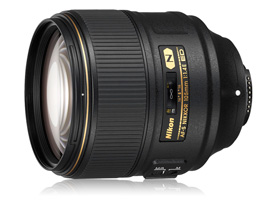


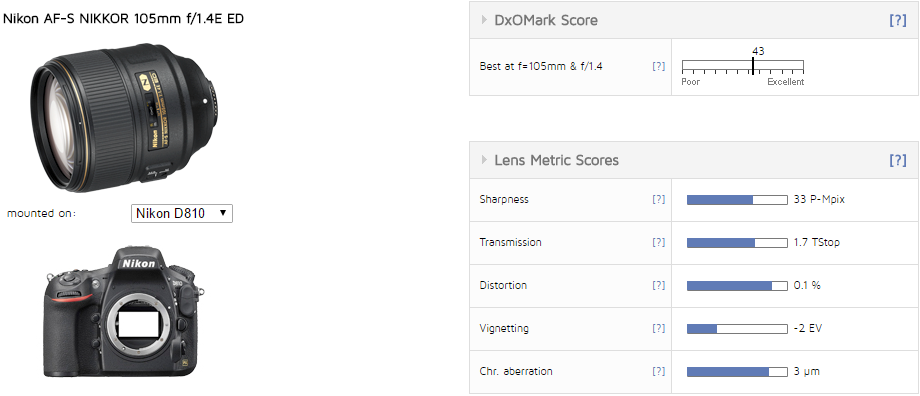
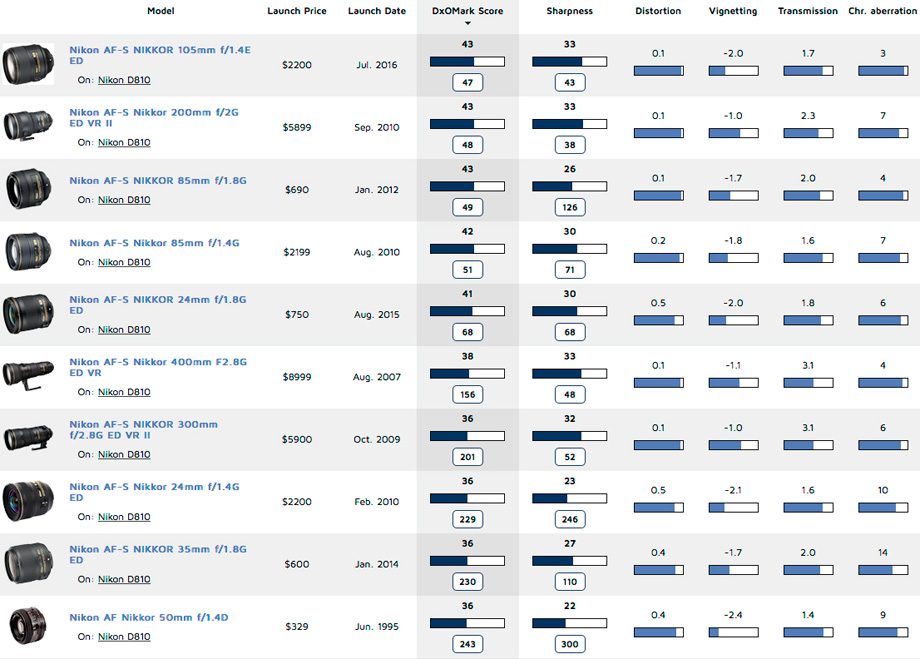

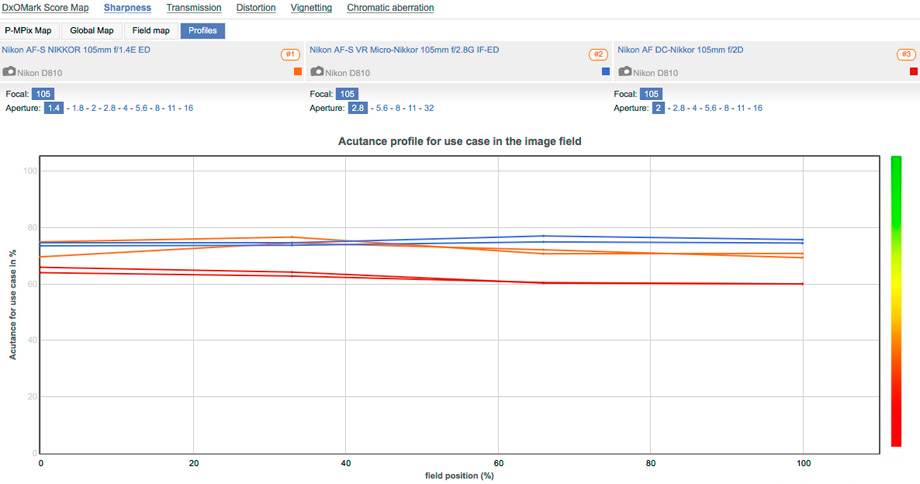
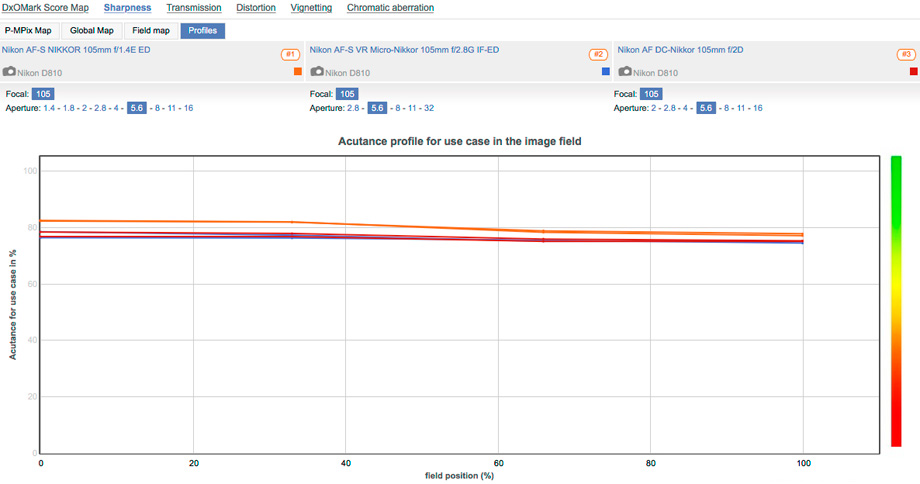
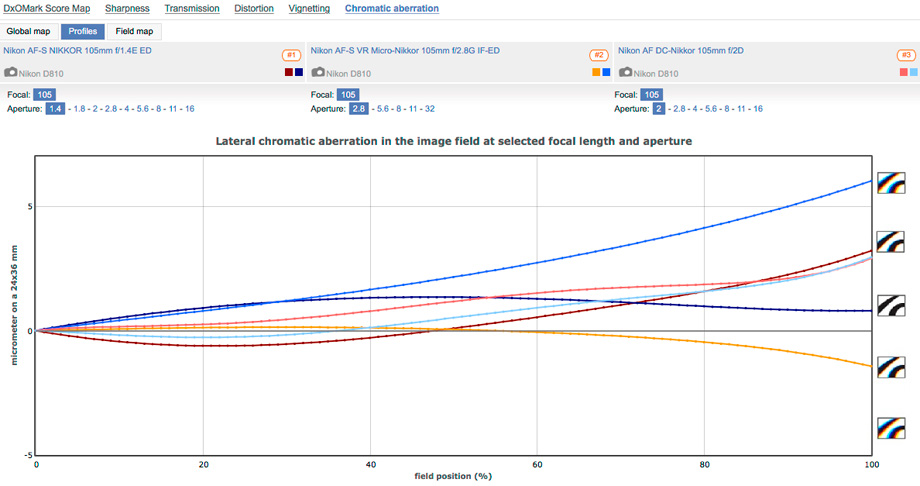
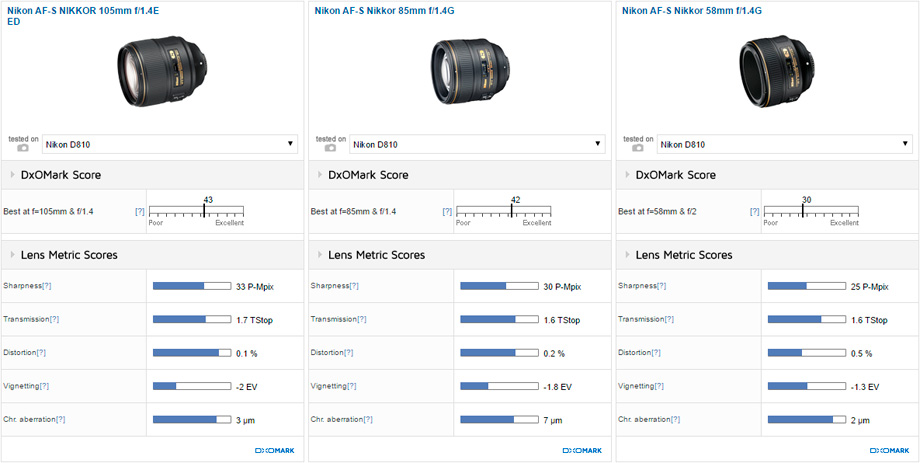
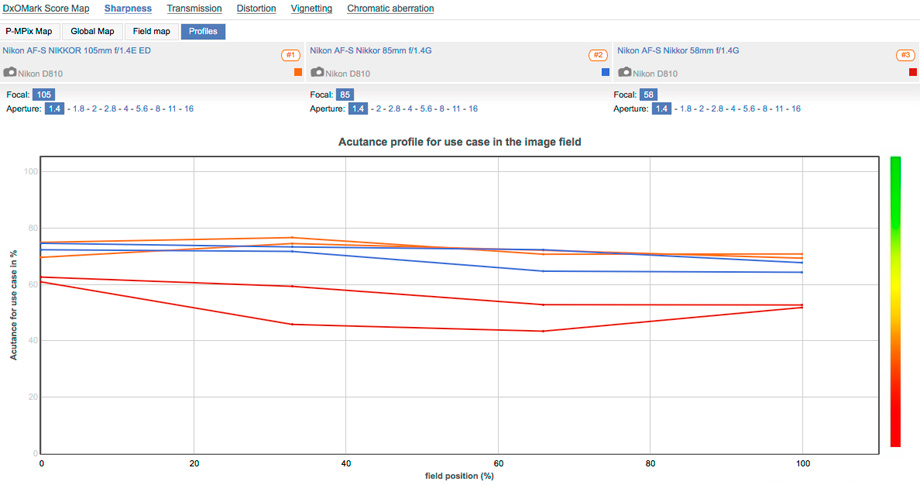
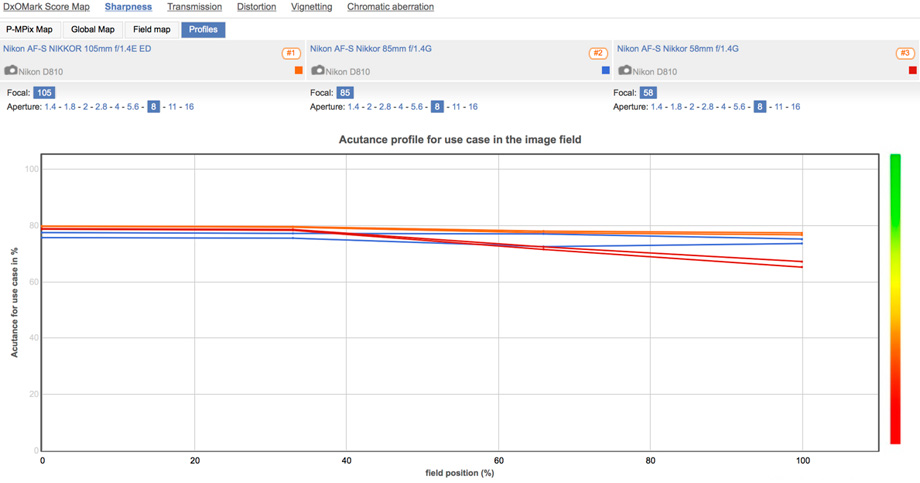
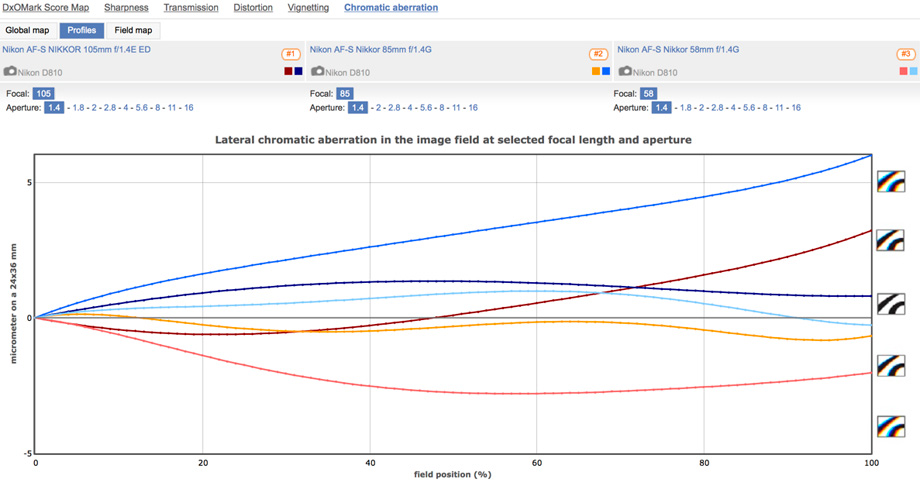
DXOMARK encourages its readers to share comments on the articles. To read or post comments, Disqus cookies are required. Change your Cookies Preferences and read more about our Comment Policy.